 Society
Society

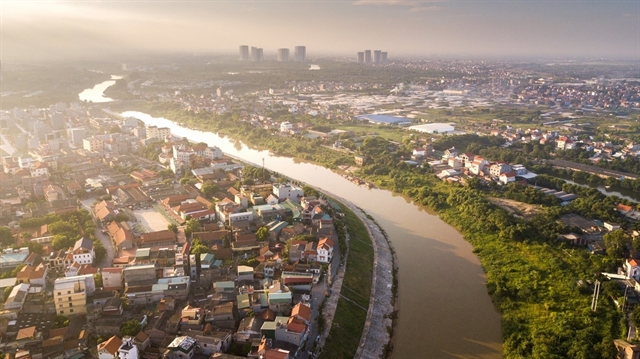 |
| Located on the left bank of the Red River, Bát Tràng Commune has effectively implemented the New Rural Development Programme, contributing to improved livelihoods, strengthened social welfare, and maintained political and public order. |
HÀ NỘI — Hà Nội has completed its mission of building new-style rural areas, becoming a national leader in rural development. After more than a decade of tireless efforts, the capital city has transformed its once-struggling rural communes into vibrant, modern communities deeply rooted in cultural tradition.
Gone are the muddy roads of the rainy season, the makeshift classrooms, and the fragmented agricultural plots. Today’s rural Hà Nội bears a fresh appearance — modern, spacious, and full of vitality. Over the past decade, Hà Nội has written a success story through the New Rural Development Programme, turning rural areas into livable, sustainable communities where tradition meets innovation.
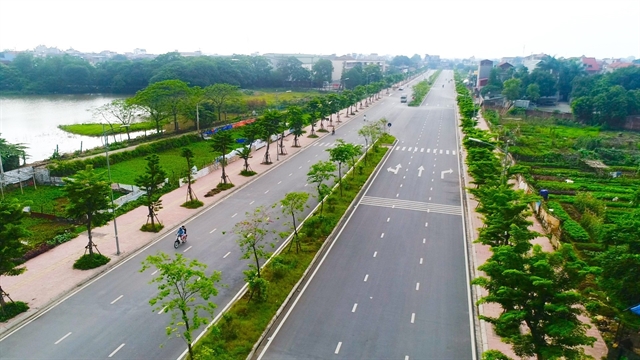 |
| In the early stages of rural development, Hà Nội prioritised infrastructure, focusing on roads, irrigation, lighting, water supply and drainage, healthcare, and education. |
In 2008, the National Assembly passed a resolution to expand Hà Nội’s administrative boundaries, incorporating several suburban districts. This historic decision created new opportunities for development but also posed enormous challenges: over 300 communes had poor infrastructure and low living standards.
With strategic vision, Hà Nội selected the New Rural Development Programme as its guiding path for agriculture and rural advancement. According to Ngọ Văn Ngôn, Deputy Chief of the Standing Office of the Coordination Office for the New Rural Development Programme in Hà Nội, the city’s Party Committee identified new rural development as a core political mission across successive terms. This was backed by the implementation of key directives such as 02-CT/TU and 04-CT/TU, forming a solid foundation for effective execution.
Hà Nội established a municipal Steering Committee led by high-ranking officials, including the Standing Deputy Secretary of the Party Committee and later the Chairman of the People's Committee — demonstrating strong leadership from the top.
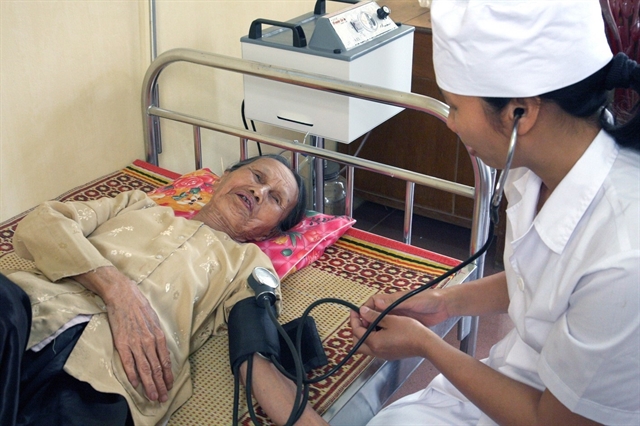 |
| Healthcare services for residents in new rural communes have been a priority for all levels of government in Hà Nội. |
One of Hà Nội’s most notable successes has been its ability to mobilise public participation. Instead of adopting a top-down, subsidised approach, the city prioritised communications and public engagement, helping people understand their roles as stakeholders. Citizens gradually shifted from passive recipients to active contributors, offering land, labour, funds, and materials — totaling more than VNĐ20 trillion (US$764.1 million) in voluntary contributions.
At the same time, Hà Nội invested in building human capital. Thousands of training courses and management workshops were held to upskill commune-level officials. As a result, rural communities established smart management teams to oversee lighting systems, waste collection, and agricultural output monitoring. Pilot models such as the “Women’s Union for Rural Development and Microfinance”, “Farmers Leading the New Rural Movement”, and land consolidation initiatives have drawn national attention.
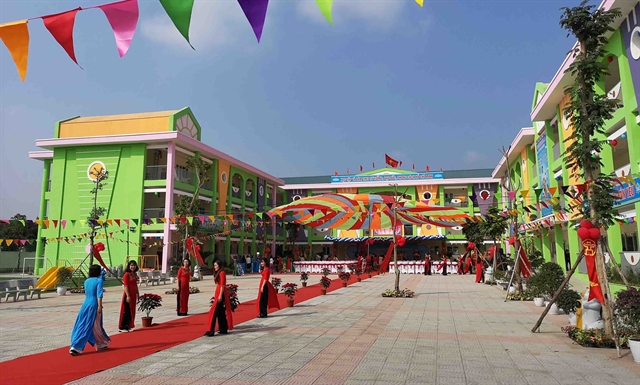 |
| Phù Đổng Commune inaugurates and installs a plaque for Phù Đổng Kindergarten, which meets Level II National Standards. |
During the early implementation phase, Hà Nội prioritised infrastructure: transportation, irrigation, power, clean water, healthcare, and education. Many initial communes were underdeveloped and lacked essential services.
Today, the transformation is clear. Rural Hà Nội is home to concrete roads lined with mural walls, tidy flowerbeds, and clearly numbered houses — matching the standard of urban neighborhoods and providing residents with a cleaner, healthier environment.
Hà Nội has also made breakthroughs in smart agriculture and technology adoption. The city leads the nation in rural economic diversification, supporting both productivity and sustainability. Notable examples include Mê Linh Commune, where smart flower farming using greenhouses, drip irrigation, and mobile-controlled climate systems has boosted yields by 20–30 per cent, while expanding market access.
In Kim Đức Commune, over 85 per cent of vegetable-growing areas now meet VietGAP standards. High-tech farming practices and organic fertilisers have helped the commune export clean produce to markets like South Korea and Japan. Meanwhile, Bát Tràng Commune has become a tourism hub, integrating pottery experiences with product innovation — attracting 15–20 per cent more tourists annually and creating stable jobs for both locals and neighbouring residents.
Hà Nội has consistently emphasised that rural development must go hand-in-hand with cultural preservation. According to Ngọ Văn Ngôn, cultural values were integrated into rural development criteria and implemented through campaigns and local movements.
Thanks to this approach, Hà Nội continues to preserve its traditional identity while adapting to urbanisation. This harmony helps enrich both the spiritual and material lives of rural communities and lays a strong foundation for the next development phase.
The results are clear: average annual income in Hà Nội’s rural areas has reached VNĐ74.3 million ($2,800) per person — six times higher than in 2010, and well above the national rural average of VNĐ56.4 million ($2,100). The city has eradicated multidimensional poverty, with zero poor households in rural areas.
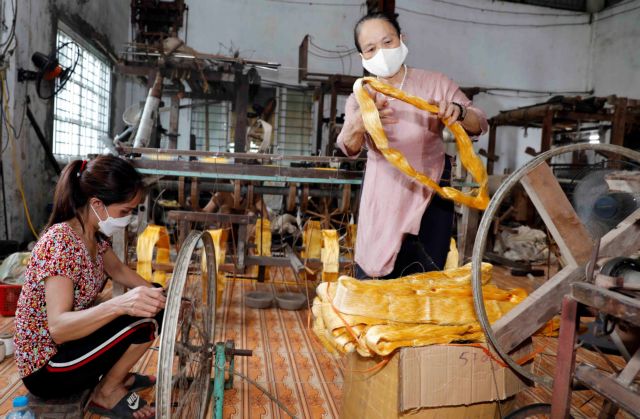 |
| Hà Nội integrates the development of traditional craft villages into the New Rural Development Programme, providing better conditions for economic growth while enriching rural cultural life. |
Other milestones include:
100 per cent of households with safe, regular access to electricity;
100 per cent of schools meeting at least Level 1 infrastructure standards;
85.9 per cent of schools meeting national standards;
100 per cent of villages with cultural houses or community centers;
95.5 per cent of villages recognised as “Cultural Villages”;
100 per cent of communes meeting legal access, defense, and security standards;
95.25 per cent health insurance coverage rate;
100 per cent implementation of electronic health records;
95 per cent of rural residents with access to centralised clean water;
100 per cent of businesses compliant with environmental protection;
100 per cent of household solid waste collected and treated as regulated.
Hà Nội currently leads the nation in OCOP (One Commune, One Product) items with 3,320 certified products — including nine five-star, 22 potential five-star, 1,571 four-star, and 1,718 three-star products.
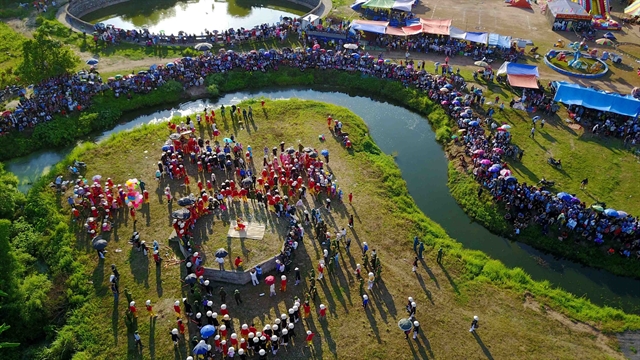 |
| Throughout rural development, Hà Nội has paid close attention to preserving and harmoniously promoting traditional cultural values in tandem with urbanisation. |
In 2024, Hà Nội’s agricultural exports reached over $2 billion, with food and farm produce alone accounting for $1.463 billion — a 34 per cent increase year-on-year. Notably, the city incurred no public debt in basic construction during the New Rural Development Programme thanks to careful planning and resource balancing.
According to Nguyễn Xuân Đại, Director of the Hà Nội Department of Agriculture and Environment and Chief of the Coordination Office for the New Rural Development Programme, Hà Nội’s outstanding achievements over the past decade have now been officially recognised. On June 22, 2025, Prime Minister Phạm Minh Chính signed Decision No 1226/QĐ-TTg, certifying that Hà Nội had successfully completed its new-style rural development mission for 2024.
This milestone not only fulfills a political commitment under the 17th Party Congress of Hà Nội but also affirms Hà Nội’s role as a national pioneer in rural modernisation.
Looking forward, Hà Nội will continue to prioritise sustainable economic development tied to its strengths in traditional craft villages, cultural preservation, and tourism — including eco-tourism, heritage tourism, and spiritual tourism. The city will also invest in cleaner, greener, more civilised rural infrastructure to elevate the quality of life for all.
Completing the national target is not an end, but a beginning. As Hà Nội moves forward with a streamlined two-tier local government model, the restructured communes are expected to operate more efficiently and effectively.
Crucially, the future of Hà Nội’s rural areas depends not only on government efforts and resources but also on the solidarity and active participation of the people — together building a sustainable rural ecosystem that truly embodies the spirit of a “happy countryside.” — VNS
“On June 22, 2025, the Prime Minister signed Decision No. 1226/QĐ-TTg recognising that Hanoi had completed the national target programme on new-style rural development for 2024. This achievement is not only a political mission aligned with the targets of the 17th Congress of the Hà Nội Party Committee, but also reaffirms Hà Nội’s position as a national pioneer in implementing the New Rural Development Programme.” — Nguyễn Xuân Đại, Director of the Hà Nội Department of Agriculture and Environment and Chief of the Hà Nội Coordination Office for the New Rural Development Programme.
According to data from the Hà Nội People’s Committee, from 2010 to the end of 2024, the total resources mobilised for new rural development in the city reached over VNĐ183.7 trillion ($7 billion). Of this, more than VNĐ162.8 trillion ($6.2 billion) came from the state budget, with the remainder sourced from socialised capital. Hà Nội has fulfilled all eight out of eight criteria stipulated in Decision No. 321/QĐ-TTg by the Prime Minister, setting the conditions for recognising a province or city as having completed new rural development for the 2021–2025 period.
The article is published under the coordination of the Coordination Office of the New-Style Rural Development Programme in Hà Nội.